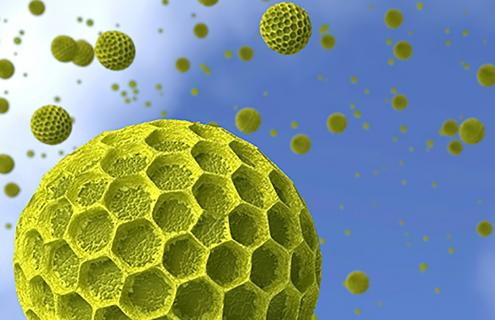
Here in New Hampshire, we like to joke that we don’t have spring—we have “mud season”. But for many Granite Staters, springtime is allergy season, and it’s no joke.
Allergies occur when the body’s immune system sees a substance as harmful and overreacts to it. The numbers of allergy sufferers are increasing nationwide; they affect as many as 30 percent of adults and 40 percent of children in the United States, according to The Allergy and Asthma Foundation of America.
During springtime, tree pollen, grasses, and weeds are to blame for bothersome allergy symptoms, which typically include runny and stuffy nose, sneezing, itchy eyes, ears, and mouth; and red, watery, swollen eyes.
Your medical provider diagnoses allergies by reviewing your personal and medical history, giving you a physical exam, and administering tests to identify your allergens.
Relieving spring allergy symptoms
Thankfully, there are several options for relieving pollen allergy symptoms, available both over-the-counter and by prescription. Your doctor might prescribe a combination of medicines and treatment options such as immunotherapy (a treatment to train your immune system not to overreact) to keep your symptoms controlled.
You can take steps to reduce your exposure to tree pollen:
- Start taking allergy medicine before pollen season begins.
- Learn about the trees in your area and when they produce the most pollen. For example, oak tree pollen is highest in the morning. If you are allergic to oak pollen, save your outdoor activities for later in the day.
- Watch pollen counts on a website like the National Allergy Bureau.
- Keep your windows closed and use a certified asthma and allergy-friendly filter on your central air conditioner.
- Dry your clothes in a dryer, not outside on a clothesline.
- Change and wash clothing you’ve worn during outdoor activities.
If you are allergic to tree pollen, you might also have asthma symptoms while the trees are pollinating.
Asthma and pollen
Asthma affects almost 25 million Americans, according to the Centers for Disease Control and Prevention. Asthma is a chronic disease in which the airways in the lungs become inflamed, causing swelling and tightening the airways in response to irritants or other triggers.
Common symptoms are coughing, shortness of breath, wheezing, and chest tightness. Asthma may lead to a medical emergency. It is important to know the signs of a severe asthma episode (or asthma attack). Over-the-counter and prescription inhalers, which deliver medication to the lungs, are the recommended treatment for asthma attacks.
Similar to allergies, diagnosis of asthma involves taking a detailed medical history and performing a physical exam that may also include lung function tests and a chest or sinus X-ray.
Avoiding environmental triggers and taking medications to prevent symptoms are helpful ways to manage allergies and asthma. Additionally, asthma sufferers should be prepared to treat asthma episodes if they occur.